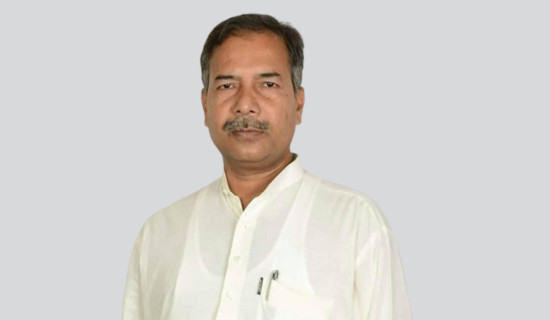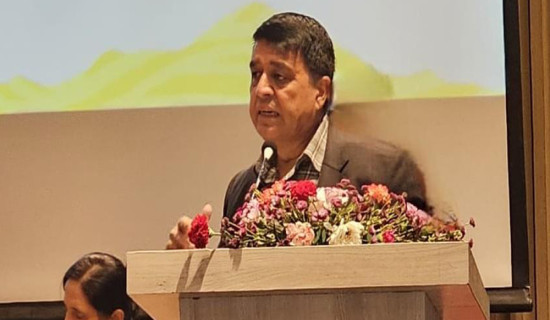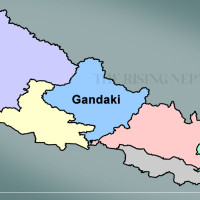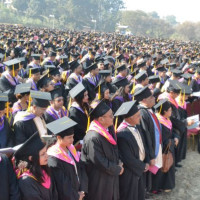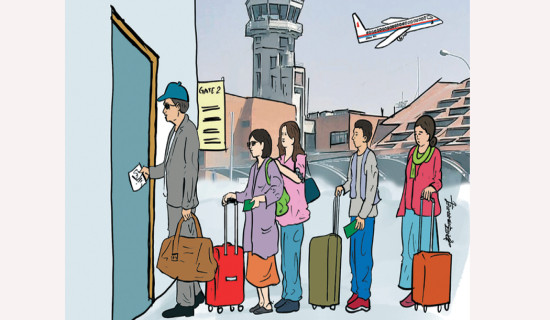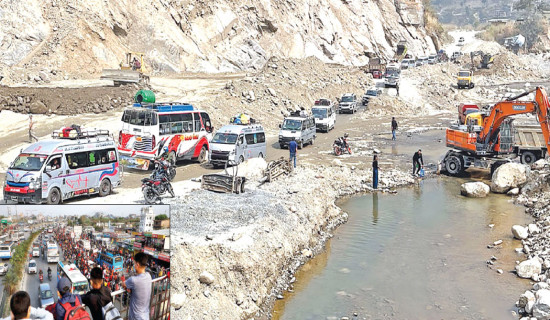- Thursday, 25 December 2025
Gen-Z rally from Maitighar to Baneshwor
How police missteps fueled tragedy
Kathmandu, Sept. 14: The September 8 confrontation outside the Federal Parliament in Baneshwor has once again raised stark questions about Nepal Police and other security forces’ preparedness and overall security strategy.
What began as a peaceful protest by Gen-Z spiraled into a full-scale breach of the restricted zone, exposing lapses in crowd-control measures. Neither the police nor the government has yet offered a clear explanation of how the demonstrators managed to march past the cordon and reach the Parliament vicinity.
As the swelling crowds converged on Baneshwor, the government responded by swiftly imposing a curfew. The police resorted to escalating force once protesters attempted to storm the Parliament grounds and began damaging property.
Water cannons and rubber bullets were deployed initially, but the situation quickly escalated. Security personnel ultimately opened live gun fire on unarmed demonstrators, predominantly teenagers. Within minutes, 19 young lives were lost in Kathmandu alone, and additional two out of the Valley, marking one of the darkest days of any protest in the country. So far, 24 genuine protestors have been killed in the history-creating movement.
And on the second day, government buildings including Singha Durbar and Supreme Court and numerous private houses and business establishments were gutted causing losses to the tune of billions.
The tragic incident has intensified debate over institutional failures within the Nepal Police and the Armed Police Force Nepal, the first and second layer of security cordon of Nepal in any type of movement to be deployed initially. It has raised pressing questions about whether the Nepali Army should assume a more decisive role in safeguarding critical state infrastructure while ensuring restraint and accountability in handling civilian dissent.
Army proves its apolitical character
“Whether it was the recent Gen-Z movement or the incident of March 28 Nabaraj Subedi and Durga Prasain orchestrated violent outburst, the Nepal Police has failed in several areas of security strategy and preparedness, which has resulted in the loss of unarmed citizens’ lives within minutes,” said war and conflict expert and former Nepali Army officer Dr. Pranaya Shumsher J.B. Rana.
“Even during a state of emergency, when the Nepali Army, though fully armed, intervened, they would fire below the knee to control situations. Now, however, civilian lives have become cheap in the eyes of the police during every street protest,” he added.
Dr. Rana further stressed, “If such incidents continue to repeat within the Nepal Police, its restructuring is urgently necessary.”
He emphasised that in this Gen-Z movement, responsibility should be borne not only by the frontline security personnel but also by the Home Minister, the Prime Minister, and others who issued the orders.
“It is highly questionable,” he noted, “that the Chief District Officer, without properly assessing the ground reality, directly and immediately ordered live firing. Surely, authorities must have known about the nature of the movement, its groups, its strength, and its leaderships’ background. Yet their inability to assess the situation properly makes everyone involved responsible,” claimed Dr. Rana.
“Our Nepal Police and Armed Police Force frequently undergo human rights and other security trainings, both at national and international levels. Yet, why is it that in Nepal, even in the smallest of incidents, they immediately resort to opening fire, resulting in the loss of lives? This cannot be dismissed as mere retaliation; it appears to amount to outright killings. Who, then, bears the responsibility for
such acts,” he asked.
In other words, is this not tantamount to extrajudicial killing? Was it not precisely because of such actions that, on the very next day, September 9, the state authority itself was overturned, he questioned.
Dr. Keshar Bahadur Bhandari, retired general of Nepali Army, said in these four days (September 9-12), the Nepali Army proved its apolitical character, and whenever the demand and decision for its mobilisation to control violent activities within the country has arisen, it has always carried out its professional duty successfully.
Another important point is that the Nepali Army has saved the nation from being trapped in the web of a ‘deep state,’ which is highly commendable. For once, there has been a shift in the way the Nepali Army is viewed and understood both domestically and internationally.
Where police faltered?
Some senior retired police officers, however, blamed the intelligence failure behind the violent incidents on September 8 and 9.
"The government intelligence failed to assess the situation properly that led to unfortunate humanitarian losses just within a few hours," said former AIG Uttam Subedi. "Had they assessed the scale of mass protest and prepared themselves for the situation, they could have handled the situation properly," he said. Also, the situation would have been different, if the local administration had not given permission to the Gen-Z to organise such a rally at Maitighar.
Although the government knew that the protestors were all unarmed, it exercised excessive force to control the crowd which resulted in several deaths and injuries, he evaluated.
It seems that that police learned nothing from the pro-royalist March 28 protest, Subedi remarked. “There was no proper assessment of how many youths would gather, how they would be mobilised, or what plans they had,” he said.
Former DIG Madhav Thapa, who had been deployed in crowd control in 1979, recalled that even during the 2006 democracy movement, only 21 people were killed over 19 days.
“The republic came with just 21 deaths, and that was possible because only non-lethal weapons were used,” he said. “At the time, rubber bullets and baton charges were widely deployed.”
Experts have observed that on Monday, September 8, the police failed to intervene at the right moment when the crowd could still be controlled. Once the situation spiraled out of hand, they resorted to indiscriminate use of lethal weapons.
"In the last one year, we have seen sporadic unorganised protests against alleged corruption and nepotism," said another former AIG of Nepal Police Bigyan Raj Sharma. "As political leaders have failed to mend their ways, youth frustrations poured during a massive protest on Monday," he claimed.
DIG and spokesperson Binod Ghimire of Nepal Police, said that, “The police had to use force with the permission of the local administration to control the crowd.”
Talking about September 8 and 9 in particular, the Kathmandu Valley Police Office, Ranipokhari, remained without head or AIG after AIG Tek Bahadur Tamang retired from the service right on the day of IGP Deepak Thapa’s compulsory retirement on September 3.
“If the head of the Valley Office was in place, there may not have occurred such serious security lapses during Monday’s Gen-Z protest,” said another serving senior police officer on condition of anonymity. Just on the second day (September 9), the Police Headquarters sent newly promoted AIG Dan Bahadur Karki making him head of the Valley Police.
Past incidents suggest that having officers from the same batch in key positions weakens the chain of command. There were all SSP rank of officers in the Valley to command when there was no appointment of AIG in the Valley Police Office, Ranipokhari.
Sources indicate the absence of a permanent Valley Police Chief contributed directly to Monday’s operational failures. With no chief, coordination fell to AIG Siddhi Bikram Shah of the operations division of the Police Headquarters, assisted by the Kathmandu Police Chief.
AIG Shah was also present for inspection in Maitighar and Baneshwor on Monday morning. While the operations division is responsible for monitoring and directing deployments, ultimate accountability rests with the Valley AIG, who had been absent for six days.
Former DIG Hemanta Malla Thakuri noted that absence of leadership disrupts chain of command, causing officers to hesitate and defer responsibility.
“When departmental leadership is missing, no one takes ownership. Officers fear acting until someone else arrives. And with all SSPs in the Valley from the same batch, the chain of command collapsed,” said Thakuri.
Thakuri added that security planning and deployment during Monday’s protest were flawed. “This was not a political rally. The lack of clarity on who would lead and the nature and purpose of the protest exposed serious negligence by the police. In situations where the demonstration’s form and objective are unclear, monitoring and deployment demand extra caution,” he said.



